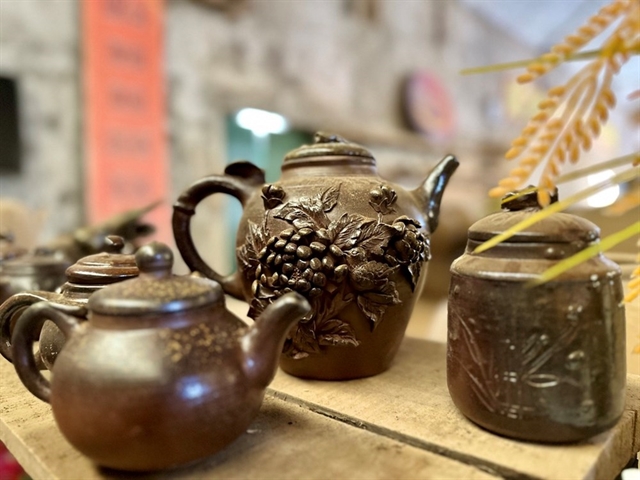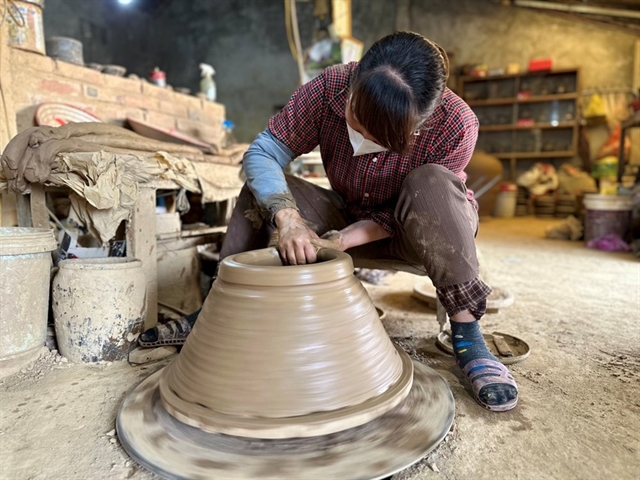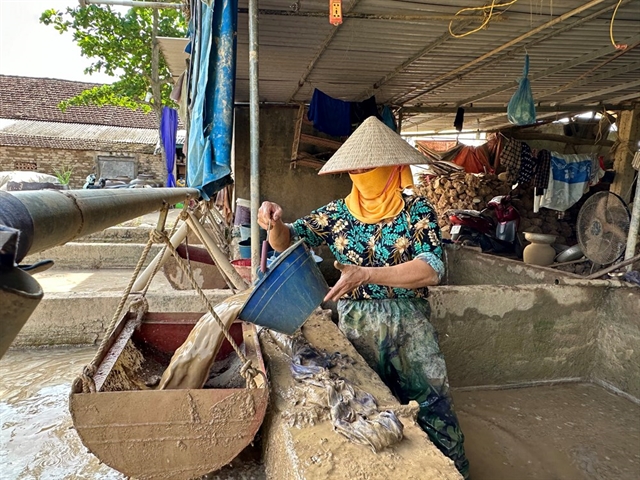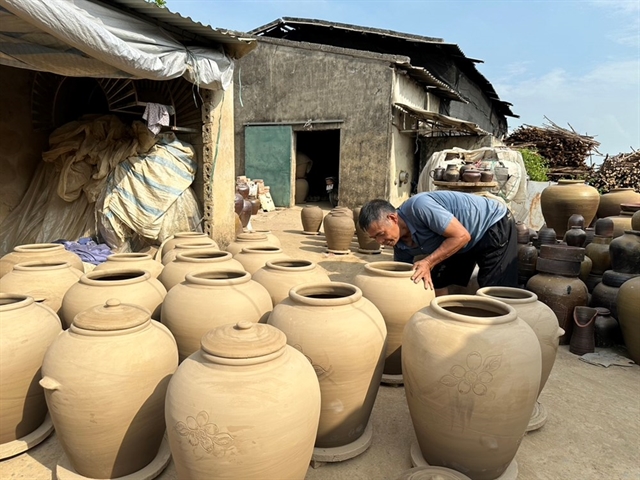 Features
Features

 |
| For over 60 years, Gia Thủy pottery has maintained its unique identity and earned international acclaim. Photos baovanhoa.vn |
Anh Tú
Nestled near the tranquil banks of the Bôi River in Ninh Bình Province, the pottery village of Gia Thủy has spent the past 60 years shaping a legacy – one formed from earth, fire and the hands and hearts of generations of skilled artisans.
Established in 1959 by a group of potters who migrated from Thanh Hóa Province, Gia Thủy Village (now part of Nho Quan Ward) began its journey with the creation of everyday household earthernware items such as water jars, cooking pots and rice containers.
Over time, the villagers embraced and refined the craft, cultivating a distinctive style that now defines the Gia Thủy pottery brand.
 |
| A potter is shaping a terracotta pot with heart and hands. |
“The pottery craft in Gia Thủy isn’t native to this land,” said Trịnh Văn Dũng, a third-generation potter and current director of the Gia Thủy Pottery Cooperative.
“But thanks to the availability of unique clay and the passion of our craftsmen, it has not only survived but thrived.”
Indeed, the secret lies deep within the earth itself. The clay of Gia Thủy is a rare mixture of brown, green and yellow soils – rich in adhesion, smooth in texture and remarkably heat-resistant.
After careful selection, the clay is sun-dried, broken into small pieces, soaked in water for five to seven hours, and then stirred, sieved and dried again, either on open ground or plastered to walls.
This seemingly simple process is delicate; over-drying or excess moisture can ruin the entire batch. Seasoned artisans, attuned to the subtleties of weather and moisture, constantly monitor the clay’s condition. After drying, the clay is kneaded three more times to achieve perfect consistency for the clay body before shaping begins.
Depending on the final product, potters form different shapes from the clay, rolling long, round coils to build jars and urns on the wheel. A veteran artisan can create 20 large items or up to 60 smaller pieces per day.
 |
| Clay used for Gia Thủy earthernware is carefully selected and processed through multiple stages. |
A living art
Nguyễn Thị Mai, who has spent 35 years at the wheel, recalled following her potter father to the workshop as a young girl. Now she is a master artisan putting the finishing touches on shaping.
"Shaping the clay body requires both an artistic eye and nimble, flexible hands to ensure the right thickness and symmetry. Each piece must feel alive,” she said.
Her colleague, Đinh Ngọc Hà, specialises in decorating, often drawing from traditional Vietnamese imagery such as tứ quý (the scenery of the four seasons) and floral patterns.
“Decorating pottery isn't just about skill,” Hà said. “It demands cultural understanding to preserve our identity. We avoid foreign motifs that might distort the soul of Vietnamese ceramic art.”
Once shaped, the pieces are sun-dried naturally before being fired for three days and nights in traditional wood-fired kilns at temperatures between 1,200–1,500 degrees Celsius.
The final products emerge with a warm, reddish-brown sheen – referred to as men da lươn or eel-skin glaze – a signature of Gia Thủy terracotta. These wares are watertight and ideal for storing liquids like water or alcohol, enhancing both taste and aroma.
 |
| Shaped clay vases are sun-dried before being fired in wood kilns. |
At the height of its fame, Gia Thủy boasted more than 40 pottery workshops employing hundreds of local workers. Today, most artisans have consolidated their efforts under the Gia Thủy Pottery Cooperative to sustain production and uphold quality standards.
While other pottery styles favour lavish glazes or gold embellishments, Gia Thủy terracotta wares remain proudly unglazed, their rustic simplicity balanced by refined craftsmanship. The village continues to produce traditional items such as jars, teapots, cups and urns, but also increasingly crafts ornamental pieces to meet modern market demands.
According to Trịnh Văn Dũng, the cooperative employs over 60 workers, including 10 master artisans, some with decades of experience.
“We produce thousands of pieces each year,” Dũng said. “Orders come in continuously, especially during the Tết (Lunar New Year) season when demand peaks.”
But success brings new challenges. The raw materials that define Gia Thủy pottery – local clay and firewood – are becoming scarce, and access to capital remains limited.
“We want to expand production,” Dũng said, “but we need support for land, resources and financing.”
In response, local authorities have designated a 2-hectare area for raw material sourcing and provided assistance with workshop space. Vocational training is also underway to ensure the next generation carries the flame forward.
Recognised as a traditional craft village since 2007, Gia Thủy now sustains over 60 jobs, with average monthly incomes of VNĐ7.5 million (about US$300). Skilled artisans can earn VNĐ15-20 million per month, and Gia Thủy products are now exported to markets in Laos, Cambodia and Japan.
As dusk falls over Gia Thủy, the kilns of the village glow with the same warmth they’ve emitted for generations. In every jar, every pot and every vase, one finds not only clay, but the quiet strength of a village that has moulded time itself. VNS